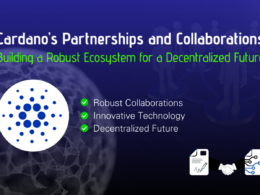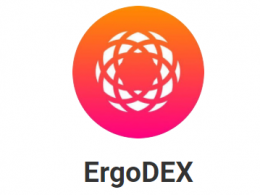Imagine if you could not send an email from a Gmail account to a Yahoo account, or could not call an iPhone from an Android, or could visit only those websites designed only with the same operating system you use.
Blockchain developments continue to grow; according to GitHub, the open source repository where most of these protocols are stored, there are now more than 14,000 blockchains.
Developers are trying to take advantage of the technology’s capabilities, but it is clear that no single solution will be able to address all demands. Each blockchain focuses on a market segment, and addresses some, but not all, usage demands.
IOTA seeks to improve payments on the Internet of Things, or VeChain, which shares similar characteristics, but with the goal of strengthening supply chain management. Singularity Net, a blockchain platform that allows anyone to create, share and monetize AI services. Polkadot focuses on improving smart contract data transfer across multiple blockchains to give greater scalability, and Cardano, with its end-to-end, decentralized finance (DeFi), decentralized digital identity (DId) and governance proposition.
If developers continue to ignore interoperability, and build blockchains with their own qualities, the ecosystem will look a lot like the early days of the non-interoperable Internet, a scattered collection of siloed blockchains.
Metcalfe’s law states that the value of a telecommunications network increases proportionally to the square of the number of users of the system. Formulated in 1976 by Robert Metcalfe in connection with Ethernet, Metcalfe’s law explains many of the network effects of communication technologies and networks, such as the Internet or the World Wide Web, and can also be applied to the blockchain, as a data transmission network.
In this sense, Metcalfe’s Law can be extended to the concept of decentralization, since if blockchains are characterized by the production of information and data in a non-centralized way, intercommunication makes the network larger, and the number of nodes that produce that data wider. Thus, Metcalfe’s law for blockchain, power decentralization, is the decentralization of decentralization.
It is important to define interoperability. Transmitting information is not the same as sharing it on the ledger in a bidirectional way. In the article About blockchain interoperability, the authors Pascal Lafourcade, Marius Lombard-Platet give a formalization of this problem, showing that blockchain interoperability is impossible according to the classical definition, and becomes a paradox, as it would merge ledgers and consensus validation.
Considering a blockchain as an integral and self-sufficient information system, to make full interoperability possible, i.e. sharing tokens on one blockchain and another, the ledger would have to be modified, considering the balance of the total tokens created on both blockchains. This confirms that bidirectional, full interoperability is only possible by creating a “2-in-1” blockchain, containing both ledgers, differentiated but shared, and this would imply joining both blockchains, losing their individuality, thus resulting in the validation consensus being unified.
I can make an analogy to better understand the problem, considering blockchains as people and each one with its brain, where full communication (interoperability) would be that those people share the same brain (ledger), the same thoughts, the same unified information.
Communication between two blockchains to transport certain data or tokens, without sharing full interoperability, without sharing the ledger, is called cross-chain bridging.
What is Cross-chain Technology?
Cross-chain technology seeks the transmission of values, information or tokens between different networks, with a communication without intermediaries.
A cross-chain bridge is a connection between two blockchains, a practical realization of blockchain interoperability without sharing the ledger.
Most bridges work with a burn-and-issue protocol, meaning that when a token is transferred from one blockchain to another, the underlying protocol first burns the token and then mints an equivalent token, on the other blockchain. This ensures that, throughout the blockchain ecosystem, monetary policies are adhered to so that there are no duplicate values.
Centralized vs. Decentralized
While centralized bridges rely on an intermediary to facilitate transactions between two networks, the protocol makes someone the authority who manages and reviews all transactions.
Decentralized bridges operate on their own, because they operate according to their smart contracts through a distributed network of participants, who validate transactions in exchange for an incentive, which ensures that they act in the best interest of the system.
In this way, decentralization is further enhanced, as information flows between different ecosystems, even though each retains its own consensus.
There are several examples of blockchain bridges, such as RSK, which connects to the Bitcoin blockchain through the use of a sidechain, and essentially makes Bitcoin more useful and flexible, with a new token called wrapped Bitcoin.
Wanchain is one of the leading cross-chain protocols with a vision to build a network bridging other ecosystems. The project leverages a decentralized cross-chain technology to integrate blockchain networks, including Bitcoin, EOS, Ethereum, XRP Ledger and Binance Smart Chain (BSC).
In a business ecosystem, companies will no longer have to deal only with customers on the network on which the business is based, and will instead be able to transact with customers on other compatible blockchains.
Blockchain Interoperability Issues and Solutions
The biggest challenge for interoperability between blockchains is the programming language. The transaction schema as well as the consensus models differ for interconnection, and in some, a lot.
The use of open protocols is presented as a possible solution to blockchain interoperability problems, as it allows universal interaction.
A perfect example of an open protocol for blockchain interoperability is atomic swap, which allows the exchange of one cryptocurrency with another, between two or more people, without involving any centralized exchange or an intermediary. HTLCs are the core technology behind how atomic swaps work and the guarantee of their operation. An HTLC or Hash Time-Limited Contract is nothing more than a smart contract that manages a payment channel. Interledger is an example of a cross-chain blockchain that uses the atomic swap protocol.
Researchers at IOHK have recently published a paper titled “Babel rates through limited liabilities” in which they discuss, in their 2.4.1 point, the topic of atomic swaps: “Swaps. As discussed, we use liabilities in babel fees to form transaction outputs that represent atomic swaps – we call those swap outputs. We do this by including a liability (negative token value) together with an asset (positive token value). Whoever consumes such an output effectively swaps the tokens described by the liability for those constituting the asset.”.
Another concept is that of multi-chain frameworks, which act as open environments through which blockchains are connected. Unlike open protocols, they are more complicated, but help facilitate open communication and the transfer of both value and data between different blockchains. With multi-chain frameworks, blockchains can connect and become part of a standardized ecosystem in order to share information. It is for this reason that they are most often referred to as the Internet of blockchains, as they offer unique and promising capabilities when it comes to blockchain interoperability. An example of this model is Polkadot.
Interoperability in Cardano
The first breakthrough in this area, for Cardano, is with the Nervos blockchain, which is an open source, permissionless, PoW consensus protocol focused on creating a public, universal, interoperable network. IOHK (the developer of Cardano) and Nervos are working to build an interoperability bridge between the two networks, which will allow users to transact cross-asset transactions.
But Cardano is also innovating interoperability from the programming language with IELE. In 2018 IOHK made agreements with Runtime Verification (the developer company), for its upgrade, as it actually started as a design language, and is working to reach steady state, as with KEVM.
Since late 2020, Cardano developers have had a bridge to the Solidity/Ethereum community through the K Ethereum Virtual Machine (KEVM). This virtual machine is an implementation of the EVM specified in the K framework, which allows developers to use the formal verification tools that K produces to check the correctness of a contract.
Thus, any developer who wants to get involved with smart contracts can program them in whatever language they are comfortable with, including Solidity. The resulting output will run correctly on any blockchain that supports IELE, regardless of the source language. This achievement will offer developers and enterprises, another additional incentive to migrate from Ethereum and participate in the Cardano blockchain.
DeFi Across Multiple Networks
Decentralized finance will also follow suit, adding interoperability, to grow the lending and token exchange business.
Undoubtedly, Ethereum remains the most active blockchain network, but other potential players are emerging that offer viable alternatives to Ethereum, which has high gas fees, making business more expensive. For example, layer one protocols like Binance Smart Chain (BSC) and Solana (SOL) are attracting billions in assets under management, while layer two solutions like Polygon (MATIC) are capturing the attention of users unhappy with Ethereum. This is in addition to the fact that they offer cheap fees and fast transaction speeds.
Cardano is set to integrate the smart contract ecosystem, once the Alonzo hard fork is executed, and the Goguen era kicks off, estimated in September this year, and will undoubtedly become a major player in DeFi.
Final Words
Today, governments, corporations, institutional and individual investors are becoming more optimistic about the evolution of blockchain technology. The numbers speak for themselves.
Users will demand to use their funds within one DeFi ecosystem and then exchange them with another, and developers will see this need as a growth opportunity for the entire industry.
Blockchain interoperability will lead to the creation of multi-token wallets, and allow users to rely on a single storage and transaction application, to use with ease across multiple blockchains. Developers will need to adapt to a multi-chain future or risk being left behind.
Interoperability thus becomes a collaborative tool for the entire crypto industry, rather than the current segment-based competition.










